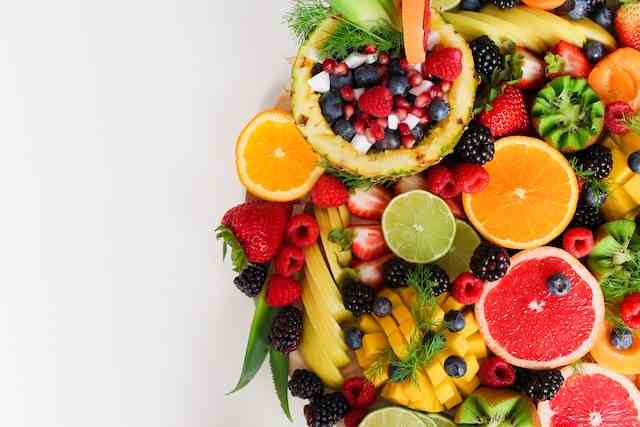Have you ever thought of the possibility that some of the fruits and vegetables we consume are man-made? Do not be alarmed or question your favourite fruit’s taste. Also, you are not alone in this, and many people think all fruits and vegetables are naturally made.
Most of these man-made fruits and vegetables are hybrids created through selective breeding in laboratories to get the desired flavour, appearance, and traits.
Now that the cat is out of the bag, pick some of your favourite fruits from the fridge and try guessing which are natural and which are man-made. This article will tell you if you’re right or wrong.
Let us look through 10 man-made fruits and vegetables you might be unaware of.
Man Made Fruits and Vegetables (2024 List)

There are so many fruits and vegetables that we consume in our day-to-day life is the creation of humans. So, if you also want to know what are those fruits and vegetables that are man-made then read this article till the end.
So, next time whenever someone asks you for a list of man-made fruits and vegetables you will be able to them quickly.
Carrots
The carrots of today, which we know to be orange, were initially white and purple; you probably didn’t know this. This vegetable has a fascinating history, as it was first planted in Persia in the 10th century.
Before carrots were selectively bred, they were thinner and had a bitter taste. Now, they look healthier, have great flavour, and taste better. Many colours have been created from the initial purple and white carrots, and we have yellow, red, and conventional orange colours.
Bananas
The sweet bananas you enjoy were once used as a cooking ingredient, and they were only edible once they had been cooked because of their bitter taste. As a crossbreed of the Musa balbisiana and Musa acuminata, bananas are among the sweetest and most commonly consumed fruits.
Musa balbisiana bananas were seedy and sweet, but Musa acuminata bananas were seedless and tough to eat. Modern bananas are seedless and sweet to eat when entirely ripped.
Broccoli
As a descendant of cabbage and originating from the Brassica oleracea family, broccoli was first created during the Greek and Roman empires, so it is among the oldest vegetables made by man.
Collard greens, brussel sprouts, kale, cauliflower, and cabbage also belong to the Brassica family. They were selectively bred from cabbage for taste, colour, and appearance. Broccoli is now a nutritious vegetable rich in nutrients and vitamins, like cabbage.
Even though many do not enjoy eating cabbage, they have come to enjoy broccoli as an ingredient or in raw form.
Apples
Apples, which they say keep the doctor away, were not as tasty as they are now. The fruit was not the best to eat raw due to its sour taste. Malus sieversii, or crab apples, were the first apples known to man, and no one found them beautiful enough to be plucked and eaten right from the tree.
Our red and green apples and other 7,500 types of apples are products of wild versions of apples cross-bred to be favourable and have a better taste. We can now pluck apples from the tree and eat them immediately. Life will not be the same without this beautiful fruit.
Cauliflowers
This vegetable is known to be 100% handmade. It has a unique history and background, like broccoli and other vegetables from the Brassica family. Cauliflowers are hardy and sweet. During the time when selective breeding became prominent, this special vegetable was created.
It was made from the flowering part of a wild cabbage. This means that the parents of wild cabbage were hand-bred together to get cauliflower. The flower clusters from cabbage make this vegetable available in over 100 varieties today.
Watermelons
What if I tell you the old watermelons were not as big as it is now? well, it is true actually, the old watermelons were small and bitter.
The red and juicy fruit that we see now is because of human experiments, it was not initially a man-made fruit completely, however, it was cultivated repeatedly by man for many centuries to produce its delicious taste.
The old watermelons used to have lots of seeds and back then it was not really as easy to eat them as it is nowadays with modern watermelons.
You won’t believe but old watermelons were as small as an apple, with pale looks and less juicy flesh, but modern cultivation has made them look bigger and brighter.
Corn
It might shock you, but corn is man-made and has been around for over 6,000 years. It was initially wild and weedy and known as teosinte; it originated in Mexico and has spread through Peru and the Southwestern US.
Unlike the corn we know today in clustered rows of yellow kernels, maize was in tiny kernels and separated with no ears or cob.
It is believed that the cultivation created cobs and larger kernels. Selective breeding gave us the corn we know today, but nature gave us the teosinte used for the breeding.
Oranges
Yes, Oranges are also a creation of humans, Oranges came through the cross-breeding of two less popular fruits – a female pomelo and a made mandarin.
Most of you must have not even heard these names before but that’s the truth about how oranges came, The tasty and fruitfil oranges that we enjoy today came from the cross-breeding of these two.
Since the breeding of oranges, other selective breeding has been done to create other kinds of citrus fruits.
Oranges are better found in climates with moist soil and air, and Oranges have some amazing history attached to them as well, back in the 1700s, oranges helped in the pandemic, back then they were seen as a luxury fruit and a symbol of wealth and status.
Tomatoes
This vegetable dates back to 700 A.D. and was created by the Aztecs. The tomatoes we enjoy today with our hamburgers and salads were carefully cultivated from wild tomatoes and used as ornamentals.
Arriving in Europe, the plants were cultivated into larger sizes and made sweet and pest-free. Unlike the tomatoes from South America, which were yellow and green in colour and inedible, our modern tomatoes are red and juicy to savour.
Strawberries
Everyone loves to eat strawberries, right? but for your information, strawberries were also a creation of humans.
In the 13th century, strawberries were wild plants planted in the garden. French botanists introduced the modern version of the fruit in the 18th century, and they were bred to become about 20 times the actual size. Despite the new size, strawberries remained small-sized fruits.
Modern strawberries are grown with artificial fertilizers and fed with the same fertilizers after harvesting. Today, strawberries are known to represent reproduction and love.
Conclusion
There you have it: 10 man-made fruits and vegetables. Did you guess correctly? How many of your favourite fruits and vegetables made a list? Whether you get them in the store or grow them in your garden, these fruits and vegetables are as healthy as natural fruits.

